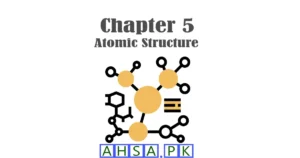The most important Chemistry chapter 3 short questions for Class 11. 1st Year Chapter 3 of Chemistry is related to gases. These questions are for the Punjab Text Book Board that can be used within all of Punjab where this syllabus is taught.
Students are advised to must prepare these questions in order to perform the best in the board examination.
Chemistry Chapter 3 Short Questions for Class 11
- Define pressure. Give its different units.
- Write down the value of atmospheric pressure in four different units.
- The plot of PV versus P is a straight line at constant temperature and with a fixed number of moles of an ideal gas. Justify.
- Explain Boyle’s law with the help of KMT.
- Justify that volume of gas becomes theoretically zero at -273oC.
- What do you mean by absolute zero temperature of gases?
- What are isotherms?
- Why do lighter gases diffuse more rapidly than heavier gases?
- Calculate the density of methane at STP.
- State Avogadro’s law.
- Calculate the number of molecules and number of atoms in 20cm3 of CH4 and 700mm of Hg.
- State Joule-Thomson effect. Write its application.
- Hydrogen and helium are ideal at room temperature but SO2 and Cl2 are non-ideal.
- Some of the postulates of Kinetic Molecular Theory are faulty. Justify. OR Write down two faulty assumptions of KMT of gases.
- Calculate the value of R in S.I units.
- Calculate the value of R in atm dm3 K-1 mol-1.
- Derive the expression for the molecular mass of the gas using the general gas equation.
- Derive the expression for the density of the gas using the general gas equation.
- Give four fundamental postulates of KMT of gases.
- Derive Graham’s law of diffusion in the light of the KMT of the gases.
- Prove that Pa = Pt. Xa
- Why regular air can’t be used in diver’s tanks?
- Calculate the fraction of total pressure exerted by oxygen when equal masses of CH4 and O2 are mixed into an empty container at 25oC.
- What do you mean by the critical temperature of gases?
- H2 and He behaves ideally while Cl2 and SO2 do not. Why?
- SO2 is comparatively non-ideal at 273K but behaves ideally at 373K.
- The rate of diffusion of ammonia is more than that of HCl. Why?
- The pressure of ammonia gas at a given temperature is less as calculated by the Vander Waal equation than calculated by the general gas equation. Why?
- Where do natural and artificial plasma exist?
- Write two characteristics of plasma.
- Define plasma. Give its application.
- Give two applications of plasma.
- What is the physical significance of Vander Waal’s constants ‘a’ and ‘b’?
- What are the units of Vander Waal’s constants ‘a’ and ‘b’?
- What are neon advertisement signs?
- How is a fluorescent light bulb different from an ordinary light bulb?
Find the answers from the Chemistry book of Class 11 Chapter 3
Important Short Questions of Chemistry 1st Year




